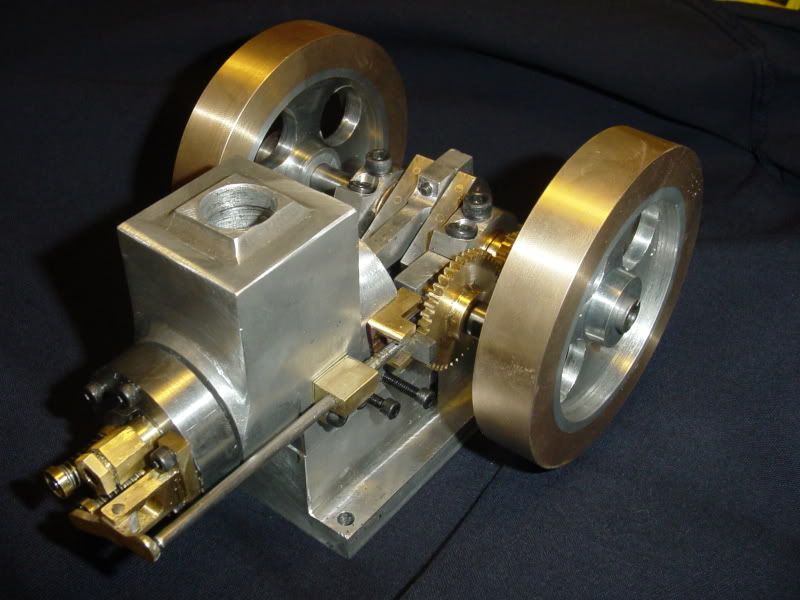- Joined
- Feb 17, 2008
- Messages
- 2,330
- Reaction score
- 446
John,
I started out using Coleman fuel (naphtha) but have since switched to gasoline. With the naphtha I tried running 1 percent two cycle oil in it for lube and it burned quite dirty. Switched to 5 percent WD40 with the naphtha and that was much better. Then tried regular gasoline with 5 percent WD40 and that made starting much easier and control was much easier. Then I switched to a lapped cast iron piston. This was a big improvement, still with 5percent WD40. Since there was still obviously plenty of lube I have dropped to 3 percent WD40. Exhaust is much cleaner and the piston still has plenty of lube and runs smooth. I have over 10 hours running on it with the 3 percent mix. I will be out of mixed fuel tomorrow and am going to drop to 2 percent for the next 100ml batch. I think it will be fine. It will filtered.
MB,
Test lead wire comes in all sizes. I bought a bunch when I needed some very flexible wire for some RC motors I was making. I have 21 gauge (0.080 OD) and 28 gauge (0.050) gauge. I am using the 28 gauge as I think it looks more to scale. The 28 gauge insulation is only good for 6kV so when I ran it through my metal base I ran it through some small silicon fuel line. 6kV is really OK as there is only about 4kV when the spark plug fires unless it is flooded. Then it gets above 20kV. BTWl if a Tiny builder needs some of either I can cut some off an mail it. Just can't be too choosy about color.
John, you obviously have a more artistic eye than I do, so what ever you do I am sure will look good. My work tends to be more utilitarian based on straight lines with even dimensions.
I think this group has 5 Tinys running now with at least 4 more under construction that I know of.
Gail in NM
I started out using Coleman fuel (naphtha) but have since switched to gasoline. With the naphtha I tried running 1 percent two cycle oil in it for lube and it burned quite dirty. Switched to 5 percent WD40 with the naphtha and that was much better. Then tried regular gasoline with 5 percent WD40 and that made starting much easier and control was much easier. Then I switched to a lapped cast iron piston. This was a big improvement, still with 5percent WD40. Since there was still obviously plenty of lube I have dropped to 3 percent WD40. Exhaust is much cleaner and the piston still has plenty of lube and runs smooth. I have over 10 hours running on it with the 3 percent mix. I will be out of mixed fuel tomorrow and am going to drop to 2 percent for the next 100ml batch. I think it will be fine. It will filtered.
MB,
Test lead wire comes in all sizes. I bought a bunch when I needed some very flexible wire for some RC motors I was making. I have 21 gauge (0.080 OD) and 28 gauge (0.050) gauge. I am using the 28 gauge as I think it looks more to scale. The 28 gauge insulation is only good for 6kV so when I ran it through my metal base I ran it through some small silicon fuel line. 6kV is really OK as there is only about 4kV when the spark plug fires unless it is flooded. Then it gets above 20kV. BTWl if a Tiny builder needs some of either I can cut some off an mail it. Just can't be too choosy about color.
John, you obviously have a more artistic eye than I do, so what ever you do I am sure will look good. My work tends to be more utilitarian based on straight lines with even dimensions.
I think this group has 5 Tinys running now with at least 4 more under construction that I know of.
Gail in NM













![DreamPlan Home Design and Landscaping Software Free for Windows [PC Download]](https://m.media-amazon.com/images/I/51kvZH2dVLL._SL500_.jpg)














![MeshMagic 3D Free 3D Modeling Software [Download]](https://m.media-amazon.com/images/I/B1U+p8ewjGS._SL500_.png)
































